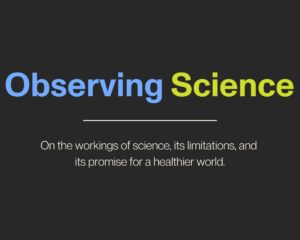Economic Policy as Health Policy
Elizabeth Rigby and Megan Hatch evaluated eight common state economic policies to understand how they impact population health.

Read Time: 5 minutes
Published:
In the policy debate over how improve Americans’ health, we typically hear deliberations over the best way to reform and re-structure our health insurance system along-side calls for greater investment in public health prevention programs. And increasingly, public health advocates are looking beyond the traditional health sector to explore how changes in transportation, urban planning, housing, and other “non-health policies” may also play a key role.
Yet in this broader cross-sectoral approach to health policymaking, the health impacts of economic policies – the redistributive taxes and spending that shape the distribution of income and wealth – are usually overlooked. This omission is somewhat surprising given the extensive body of research that shows that the significant gap in wealth between rich and poor people also impacts health, well-being, and future life expectancy.
We undertook a research study designed to better understand how economic policies may shape health outcomes, as well as the role of these policies in broader cross-sectoral efforts to improve health. This study was funded by the RWJF Public Health Law Research program and published in a Special issue of Health Affairs on the Culture of Health (November 2016).
We evaluated eight common state economic policies that determine tax levels, spending on health and welfare, and regulations that shape the labor market to understand how those policies impact population health. We examined the relationship between changes in these policies and changes in seven measure of state-level population health in all fifty states for the period of 1990 to 2010.
Specifically, states with higher-than-average minimum wages had lower rates of smoking and obesity, compared to states with average minimum wages.
In three of the eight policies – tax credits for the poor, the state minimum wage, and the absence of a right-to-work law – we documented improvements across multiple areas of health, such as the adult smoking rate, the rate of deaths from cardiovascular disease, low birth weight, and years of potential life lost. Specifically, states with higher-than-average minimum wages had lower rates of smoking and obesity , compared to states with average minimum wages. And states with larger tax credits for the poor saw significantly better rates in indicators across the board — in all areas except smoking.
However, the tax burden on the rich, the corporate tax rate, and the sales tax rate were only minimally impactful on health — positively or negatively. While the other economic policies impacted between three and five health outcomes, greater tax burdens on the rich and greater than average corporate tax rates were each only associated with one measure of health.
Overall, we found better health outcomes in states that enacted policies focused on increasing the incomes of low-income and working-class families, instead of on shaping the resources available to wealthier individuals. This suggests that boosting the incomes of these lower income families may be a promising pathway to better health.
Efforts to infuse a culture of health throughout American policymaking must broaden the focus on non-health policies to include attention to economic policies that have an impact on low- and middle-income working families. To ignore these laws and regulations that shape the distribution of income in U.S. society is to miss an important part of the socioeconomic context that affects health and drives health disparities.
In fact, it likely that health is not on the minds of most policymakers when setting economic policy.
However, there are barriers that make it difficult to incorporate economic policy and economic policymakers into cross-sector collaboration efforts, as well as in other health-in-all-policies frameworks. One major challenge stems from what we call the “paradox of governance,” in which the policymakers with jurisdictional control over economic policies have different (and often competing) priorities and few incentives to incorporate health considerations into their work. In fact, it likely that health is not on the minds of most policymakers when setting economic policy.
To check this expectation, we examined policy guides on minimum wage rates, low-income tax credits, and union rights on the website of the National Conference of State Legislatures, a nonpartisan membership association of state legislators across the fifty states. We coded these documents for explicit mentions of population health outcomes and implicit references to health, health care, or overall well-being.
In this review of policy documents, we found no explicit consideration of the potential health effects of these policies from either supporters or opponents. The only implicit mention of health was the fact that workers in right-to-work states were less likely to have health insurance. This simple analysis highlights the need to develop new arguments and strategies to illustrate the key role of economic policy in shaping a culture of health.
Further, public health advocates must accept that a fuller incorporation of economic policy as health policy is likely to require leadership primarily from the health sector itself. It will be necessary for the health sector – including public and private entities – to initiate and then take the lead maintaining efforts to incorporate economic policy in health-in–all-policy initiatives. It is unlikely that economic policy makers would incorporate health considerations on their own.
Feature image: Paul Sableman, Raise the Minimum Wage, used under CC BY 2.0




